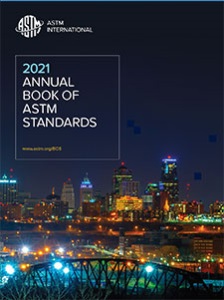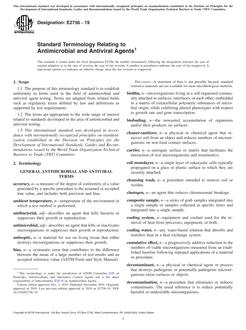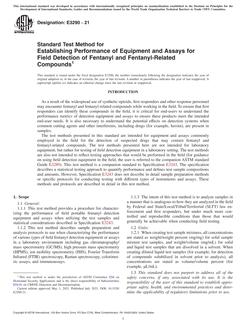1.1 This practice covers procedures for a quantitative accelerated laboratory evaluation of the influence of extraction solutions containing ions leached from thermal insulation on the aqueous corrosion of metals. The primary intent of the practice is for use with thermal insulation and associated materials that contribute to, or alternatively inhibit, the aqueous corrosion of different types and grades of metals due to soluble ions that are leached by water from within the insulation. The quantitative evaluation criteria are Mass Loss Corrosion Rate (MLCR) expressed in mils per year determined from the weight loss due to corrosion of exposed metal coupons after they are cleaned.
1.2 The insulation extraction solutions prepared for use in the test can be altered by the addition of corrosive ions to the solutions to simulate contamination from an external source. Ions expected to provide corrosion inhibition can be added to investigate their inhibitory effect.
1.3 Prepared laboratory standard solutions are used as reference solutions and controls, to provide a means of calibration and comparison. See Fig. 1 and Table 1.
1.4 Other liquids can be tested for their potential corrosiveness including cooling tower water, boiler feed, and chemical stocks. Added chemical inhibitors or protective coatings applied to the metal can also be evaluated using the general guidelines of the practice.
1.5 This practice cannot cover all possible field conditions that contribute to aqueous corrosion. The intent is to provide an accelerated means to obtain a non-subjective numeric value for judging the potential contribution to the corrosion of metals that can come from ions contained in thermal insulation materials or other experimental solutions. The calculated numeric value is the mass loss corrosion rate. This calculation is based on general corrosion spread equally over the test duration and the exposed area of the experimental cells created for the test. Corrosion found in field situations and this accelerated test also involves pitting and edge effects and the rate changes over time.
1.6 The values stated in inch-pound units are to be regarded as standard. The values given in parentheses are mathematical conversions to SI units that are provided for information only and are not considered standard.
1.7 This standard does not purport to address all of the safety concerns, if any, associated with its use. It is the responsibility of the user of this standard to establish appropriate safety and health practices and determine the applicability of regulatory limitations prior to use.

Note 1 – The Fig. 1 bar graph was created using the MLCR data shown in Table 2. Standard reference tests using de-ionized water, 1 ppm, 5 ppm, and 10 ppm chloride solutions were performed on mild carbon steel coupons. The calculated MLCR test results for mild carbon steel coupons were separated into four ranges. The rating criteria ranges were developed to accommodate the results obtained using this practice on the reference standards and experimental insulation samples. The ranges used are: MLCR = 0 to 15 mils = range A; MLCR = 15.1 to 35 mils = range B; MLCR = 35.1 to 60 mils = range C, MLCR = 60.1 and higher = range D. The bars on the graph represent the total number of occurrences within the range for each of the reference solutions.
Note 2 – It is necessary for each laboratory to develop their own data, with their own individual plate or plates, metal, operators, cleaning procedures, and environmental conditions to establish the ranges of MLCR calculated for the reference standards. The insulation or other test solutions are then evaluated against the reference solution results.
FIG. 1 Standard Reference Tests
Product Details
- Published:
- 11/01/2009
- Number of Pages:
- 10
- File Size:
- 1 file , 310 KB
- Redline File Size:
- 2 files , 590 KB


